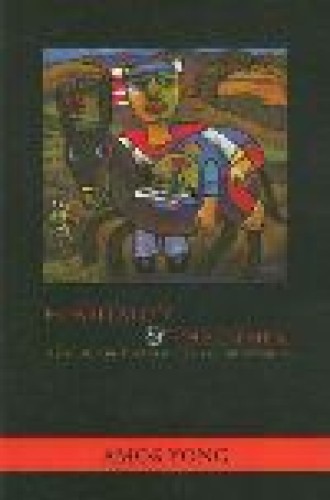Guests of God
Theological discussions of the relationship between Christianity and other religions have been at a steady simmer at least since the 1973 publication of John Hick’s God and the Universe of Faiths. Throughout the 1970s and ’80s, Hick’s pluralism became the reigning orthodoxy as it was taken up by many others, including Paul Knitter and Wilfred Cantwell Smith. But by the early 1990s, that orthodoxy was severely crippled as postmodern theories penetrated the academy. The debate gained a new urgency with the events of 9/11.
Amos Yong, a Pentecostal professor of theology at Regent University, self-consciously positions his new book as a post-9/11 response to Hick. Yong is critical of Hick’s pluralism, yet he asks that his book be read not as another attack on Hick’s efforts but as an attempt to (in the words of theologian David Cheetham) “construct hypotheses of equal caliber.”
Yong’s goal is a theology of religions that can retain pluralism’s open and vulnerable practices while remaining robustly orthodox. He achieves that goal primarily via the brilliant core of his book: the fourth chapter, titled “Per forming Hospitality,” is a remarkable account of hospitality in both the Old and New Testaments through the lens of Luke-Acts. Yong develops a powerful case that Luke understands the whole of the scriptural witness to be summarized not so much as “Go, make disciples” or even “Go, be hospitable,” but rather as “Go, receive hospitality.”
Jesus is the hospitality of God because he is “the exemplary recipient of hospitality”: “From his conception in Mary’s womb by the power of the Holy Spirit to his birth in a manger through to his burial (in the tomb of Joseph of Arimathea), Jesus was dependent upon the welcome of others.” Between the manger and the tomb, he was the guest of Simon Peter, Levi, Martha, Zaccheus and various nameless Pharisees, among others. It is precisely because of, not in spite of, this dependence on the hospitality of others that Jesus is the proclamation of the hospitality of God. In the story of the road to Emmaus in Luke 24, it is when Jesus is invited to stay and eat that the disciples are able to recognize him. Throughout Jesus’ ministry, those who make him their guest become guests of God. The gift of salvation is dependent on the gift of the hospitality of others.
That same pattern continues in Acts, where Paul is just as dependent on the hospitality of others as Jesus was. Ananias, Barnabas, the Philippian jailer, Prisca and Aquila, Roman centurions, the Maltese islanders and many others host and care for Paul from the beginning to the end of his ministry. As with Jesus, Paul’s hosts become guests of God by making him their guest. And this is the case not just with Paul and Jesus. Luke understands this pattern to exist throughout scripture. Stephen’s retelling of the Old Testament in Acts 7 shows Israel’s journey to also be depen dent on others. Abraham leaves home; Joseph is sold into Egypt; Moses is adopted by Pharaoh’s daughter. From here it is a short step for Yong to argue that the text itself is hospitable. Aware ness of just how much the Bible is influenced by and indebted to Near Eastern cultures doesn’t threaten biblical author ity; it underscores hospitality.
For Yong’s purposes, the story of the Good Samaritan is the crucial parable for a theology of other religions. Jesus makes the Samaritan the embodiment of divine hospitality (Luke 10) soon after the Samaritans reject Jesus’ visit (Luke 9). This raises a question that collapses conventional distinctions between exclusivism, inclusivism and pluralism. If the Samaritans can stand in for all other faiths, “Might people of other faiths not only be instruments through which God’s revelation comes afresh to the people of God, but also perhaps able to fulfill the requirements for inheriting eternal life (10:25) precisely through the hospitality that they show to their neighbors”—who include Christians?
It is hard to overstate the importance of the work Yong does here. Most other theologians would start by enjoining us to be hospitable hosts. A few might then go on to add that we need to be gracious guests. Yong reverses this pattern, enabling us to see the church in a powerful new way. The church is no longer a given form that needs to learn how to better engage others. The church just is its journey with others, formed by its never-ending practice of being hosted by and hosting myriad others. The divine gift it bears to the world is given to it by the world.
All of that said, my enthusiasm wanes somewhat outside of the fourth chapter. Yong calls his theology of hospitality one of two minor theses in service of his major thesis. To argue for the second minor thesis, that beliefs and practices are interconnected, Yong draws on a perhaps overlong list of thinkers—J. L. Austin, Nicholas Wolterstorff, George Lindbeck, Kevin Vanhoozer, Reinhard Hütter and others. The two minor theses enable Yong’s major thesis: that “many tongues equals many practices.” That is, the diversity present at Pentecost makes possible and justifies a vast array of Christian practices of hospitality.
None of this is necessarily objectionable, but whether it is required by or even more than minimally helpful to Yong’s theology of hospitality is not clear. To begin with, the distinction between beliefs and practices is notoriously clumsy in the hands of any author. Yong says that “many tongues equals many practices,” for example, but isn’t glossolalia itself a practice? Further more, though Yong employs admirable care and generosity in summarizing the practices correlative to exclusivism, inclusivism and pluralism, they still overlap so much that they threaten the thesis.
What should Yong have done? Instead of trying to connect beliefs and practices, he might have taken the category of belief head-on. Many students of religion have argued that the notion of belief as conventionally understood is an invention of the modern West. Yong’s insistence that it is connected to practice is an improvement, but someone committed to interreligious dialogue might have thought more about whether belief is even an intelligible concept outside of a particular Protestant modernity. A stereotypical evangelical wants to know if you believe in Jesus Christ as your personal savior. An Ethiopian Orthodox Christian wants to know if you fast on Wednesdays and Fridays. To say that the former’s belief correlates to particular practices and that beliefs are implicit in the latter’s practice does not get at the far more interesting question about the divergence in conceptions of faith.
Despite these quibbles with Yong’s execution of his thesis about beliefs and practices, the core insights in the fourth chapter deserve to be widely read and studied.






